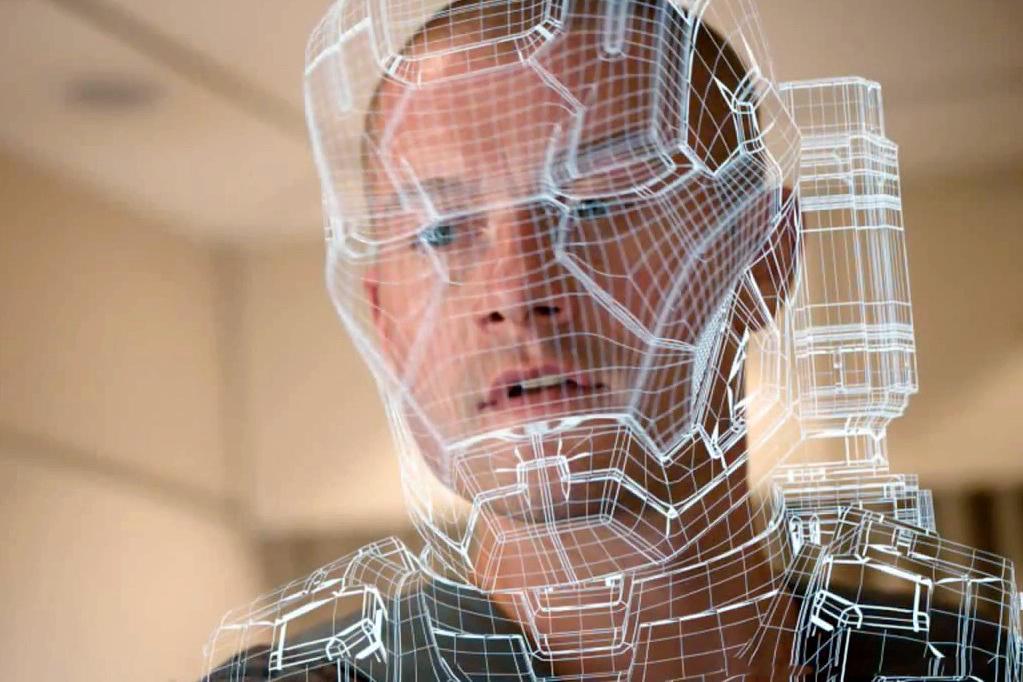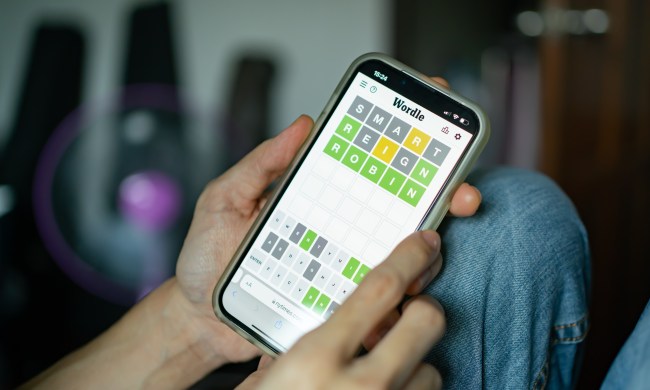Five films are nominated for an Academy Award in the “Visual Effects” category this year, and they each offer a nice look at the amazing tricks filmmakers and their effects teams can pull off on the big screen. In recognition of these five films and one of our favorite Oscar categories, we’re putting the spotlight on one “Visual Effects” nominee each day leading up to Sunday’s broadcast and taking a closer look at what made them stand out.
Previously, we explored the breathtaking visual magic of outer-space thriller Gravity, the technology that brought a dragon to life in The Hobbit: The Desolation of Smaug, the process of building the San Francisco cityscape of 2259 for Star Trek Into Darkness, and the trouble with trains in The Lone Ranger. Now, we take a look at Iron Man 3 and the way a talented VFX team created an army of high-tech suits to interact with Robert Downey Jr. in the film’s grand finale.
It’s always entertaining to see billionaire playboy Tony Stark don his high-tech armor and battle bad guys, but in Iron Man 3 audiences learned why the brilliant industrialist’s mind is his greatest weapon – and why Marvel’s armored Avenger is more than just a man in a suit.
Co-written and directed by franchise newcomer Shane Black, Iron Man 3 showed what Tony (Robert Downey Jr.) was capable of without his suit after international terrorist The Mandarin destroyed the brilliant inventor’s workshop. However, fans were rewarded for their patience in the film’s exciting third act, which featured 36 unique, automated versions of Iron Man armor that come to Tony’s aid in an explosive battle atop an oil-drilling platform.
After upping the visual effects ante in each of the three previous films to feature Iron Man (Iron Man, Iron Man 2, and The Avengers), Iron Man 3 went all-in with its memorable final battle. Not only did it feature a legion of unique, armored suits flying, blasting, and smashing their way through the bad guys, but it also sported a sequence in which Tony switches from one armor to another by jumping out of and into various suits in mid-air.
In its entirety, Iron Man 3 represents the work of 17 visual-effects studios around the globe.
“This was a tricky one,” said Williams of the frantic Iron Man 3 finale in a May 2013 interview with Art of VFX. Describing one element of the scene – in which various suits of Iron Man armor under the control of Tony’s robotic assistant J.A.R.V.I.S. do battle with super-powered mercenaries while Tony pursues Aldrich Killian (Guy Pearce) across the collapsing oil rig – Williams revealed that it was the background action that gave his team some initial trouble.
“The foreground fighting and choreography is pretty straightforward. It was the background action that took a while to get right,” he said. “Animators are trained to make action as impressive as possible and bring it to the forefront. We found that early on, we were having too many interesting things happening in the background action, [and] the viewer’s eye was being drawn away from the storytelling and into the background.”
Weta addressed this problem with a mix of framing and timing adjustments that kept flying armor out of the center of the screen and randomized key moments in these background battles. The result was a series of intentionally “messy” skirmishes between Iron Man’s army and the film’s villains.

Still, in order to create that skirmish, the team first had to come up with a proper army to assist Tony Stark. Tasked with bringing 12 “hero” suits to life that would be featured in up-close battle scenes aboard the drilling platform, as well as another 24 suits that would be seen zipping by (or exploding) in background action, Weta began by developing highly detailed, digital versions of several suits that were designed by visual effects studio Digital Domain.
Once the “foundation” suits designed by Digital Domain were translated into highly detailed models that would withstand the scrutiny of eagle-eyed audiences (and hopefully, the effect of modern, massive theater screens), various elements of those same hero suits were then repurposed for the background, “non-distinct” suits. This allowed Weta to preserve the high level of detail for all of the suits no matter how long they appeared on the screen, and saved them the time necessary to construct new, high-detail models for each background suit. Using the gauntlet from one hero suit, the boots from another, and a fresh coat of digital paint, Iron Man’s army was quickly (by visual-effects standards) assembled.
“We found that early on, we were having too many interesting things happening in the background action.”
“[The hero suits’] textures got used on the individual suits and the only texture work we had to do for the [non-distinct] suits were distinct markings.” he said. “So the ‘Hot Rod’ suit had flames on his legs, for example. But for the most part it was changing a couple of shader parameters or group assignments – what was gold on one suit was car paint on another.”
As for bringing the hulking “Igor” and the rest of the featured hero suits to life for their up-close brawls, Weta’s animators used a combination of key-framed and motion-captured performance to create the sequences. In most cases, once the suits existed as high-detail digital models, it was simply a matter of mapping the digital models to the choreography of the combatants.
Of course, bringing a brawl between an armored Iron Man suit and a super-powered villain to life is one thing, but having Tony jump into a suit that assembles around him and out of a suit that’s been damaged in mid-flight is another task entirely. In order to maintain continuity during the third act battle, many of the suits needed to show scarring or even missing portions of armor as Tony hopped between them in his pursuit of Aldrich. With so many different animators working on the various components of the sequence – some handling background action, some working exclusively with foreground, hero-suit brawls – the team needed to prevent any important details from getting lost in the production pipeline.

This requirement gave birth to the “Guide Rig Puppet.”
Developed by Weta specifically for Iron Man 3, the Guide Rig Puppet allowed animators to manipulate the digital “puppet” model in a given sequence and generate new data for it – such as transformation elements that occur around Tony as he jumps into or out of the suit and the damage inflicted on that suit – and send that down the production pipeline to subsequent animators. Normally, animators would only be able to work with a static model that couldn’t be altered during the animation process.
“The cool part was that the tools we built allowed the animator to flag down the pipeline which panels they wanted to go downstream and which panels they wanted to stay upstream,” explained Weta Digital animation supervisor Aaron Gilman in an interview with FXGuide. “So if you were working on a shot and you know that your character has been damaged four times – when you’re doing a shot that’s had four shots worth of damage – you need to very quickly load that damage from those shots to your shot, so that when you do further cuts you want to make sure you’re cutting on top of the damage that’s already been done.”
“Our guys took the lessons they learned on The Avengers and applied them to Iron Man 3”
Having the time to develop such a unique approach to the animation process isn’t typical in projects like this, but Williams acknowledged that Weta benefited from having a familiarity with the visual-effects side of Marvel’s cinematic universe thanks to their work on The Avengers.
“Our guys took the lessons they learned on The Avengers and applied them to Iron Man 3,” said Williams. “The suits came together real fast and we had to do very little shot-specific cleanup.”
Still, given the Iron Man franchise’s high-tech hero, it’s fitting that each installment of the series so far has earned an Oscar nomination for its visual effects team. After all, when your series’ main character is a genius who can whip up technological marvels in the time it takes the rest of us to calculate the tip at dinner, there’s no small amount of pressure to work digital magic that takes a noticeable leap forward with each story.
To their credit, the visual effects teams for Iron Man 3 did the sort of work likely to impress even Tony Stark himself.
(Images © Marvel Studios)
Check out our coverage of the other nominees






